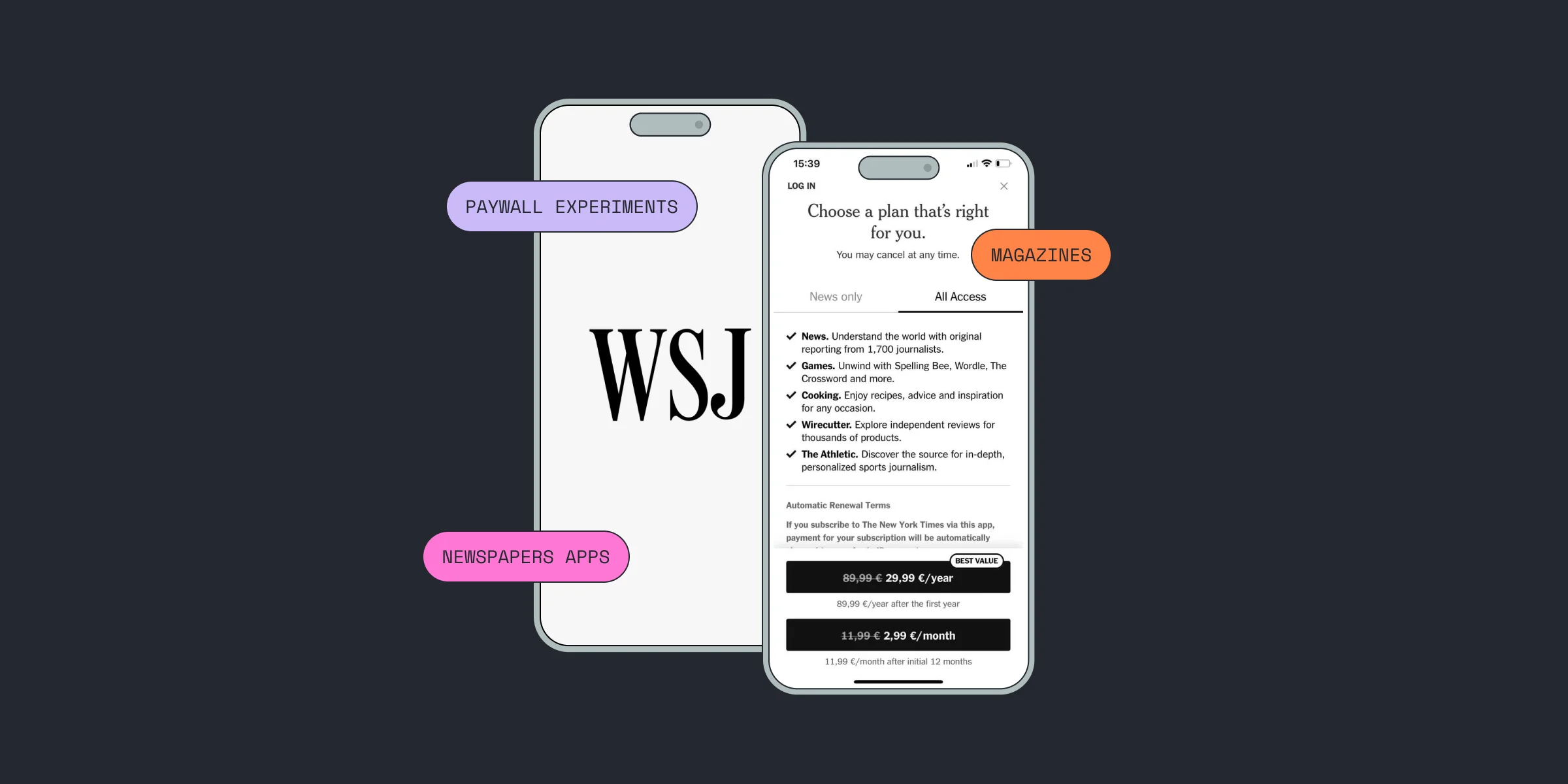Paywall Experimentation for Magazines & Newspapers apps
Paywall Experimentation for Magazines & Newspapers apps

Kate

Kate
May 29, 2023
May 29, 2023
In today’s rapidly evolving media landscape, newspapers are increasingly embracing subscription-based revenue models. One notable success story for this methodis the Times, which exemplifies the value of subscriptions in an industry facing challenges such as declining print circulation and advertising revenue. Back in 2011, the Times introduced a paywall, a decision that proved instrumental in generating significant revenue from digital subscriptions.
In today’s rapidly evolving media landscape, newspapers are increasingly embracing subscription-based revenue models. One notable success story for this methodis the Times, which exemplifies the value of subscriptions in an industry facing challenges such as declining print circulation and advertising revenue. Back in 2011, the Times introduced a paywall, a decision that proved instrumental in generating significant revenue from digital subscriptions.














